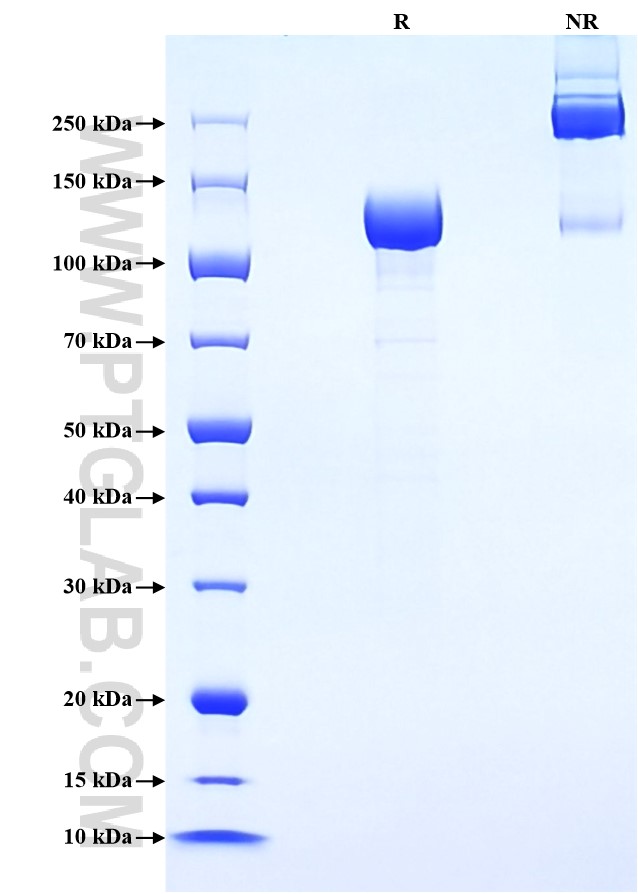Recombinant Human Tie2 protein (rFc Tag)
种属
Human
纯度
>90 %, SDS-PAGE
标签
rFc Tag
生物活性
未测试
验证数据展示
产品信息
| 纯度 | >90 %, SDS-PAGE |
| 内毒素 | <0.1 EU/μg protein, LAL method |
| 生物活性 |
Not tested |
| 来源 | HEK293-derived Human Tie2 protein Ala23-Leu748 (Accession# Q02763-1) with a rabbit IgG Fc tag at the C-terminus. |
| 基因ID | 7010 |
| 蛋白编号 | Q02763-1 |
| 预测分子量 | 107.3 kDa |
| SDS-PAGE | 110-140 kDa, reducing (R) conditions |
| 组分 | Lyophilized from 0.22 μm filtered solution in PBS, pH 7.4. Normally 5% trehalose and 5% mannitol are added as protectants before lyophilization. |
| 复溶 | Briefly centrifuge the tube before opening. Reconstitute at 0.1-0.5 mg/mL in sterile water. |
| 储存条件 |
It is recommended that the protein be aliquoted for optimal storage. Avoid repeated freeze-thaw cycles.
|
| 运输条件 | The product is shipped at ambient temperature. Upon receipt, store it immediately at the recommended temperature. |
背景信息
Tie2 (also known as TEK) is a tyrosine-protein kinase expressed almost exclusively on endothelial cells. It contains two immunoglobulin-like domains, three epidermal growth factor (EGF)-like domains and three fibronectin type III repeats. Tie2 acts as cell-surface receptor for ANGPT1, ANGPT2 and ANGPT4 and regulates angiogenesis, endothelial cell survival, proliferation, migration, adhesion and cell spreading, reorganization of the actin cytoskeleton, but also maintenance of vascular quiescence. Mutations in the gene of Tie2 are associated with inherited venous malformations of the skin and mucous membranes. Tie2 can also exist as a soluble form (sTie2) which is released from endothelial cells and present in human blood. The concentration of sTie2 is increased in a range of diseases, including peripheral arterial disease and myocardial infarction.
参考文献:
1. Davis S. et al. (1996). Cell. 87(7):1161-1169. 2. Reusch P. et al. (2001). Angiogenesis. 4(2):123-131. 4. Nätynki M. et al. (2015). Hum Mol Genet. 24(22):6374-6389. 5. Alawo DOA. et al. (2017). Sci Rep. 7(1):3658.


